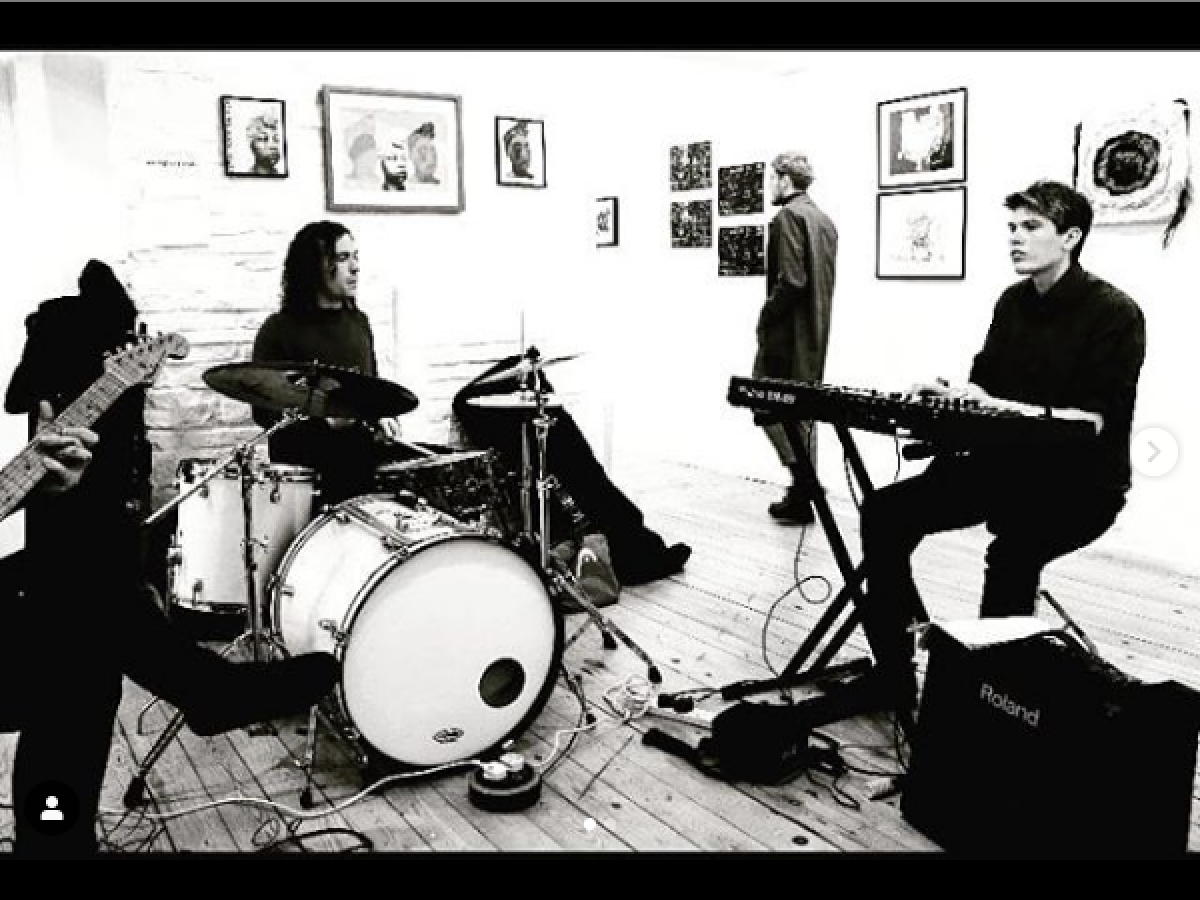How does it benefit me and Mother Fungus?
A grade five theory exam is something that I’ve felt that I needed to do for a while, just so as to establish my knowledge of music theory and get all the strands of my music theory knowledge to the same point. When applying to Universities and receiving conditional offers, most of my choices asked for either a grade five in music theory or an equivalent level of knowledge to that. When I auditioned at the RNCM , I was required to take a music theory test that was the same standard as grade five theory. Therefore it is clear that to academic institutions, grade five is an acceptable qualification to prove the required amount of music knowledge for most music courses.
There are two main exam boards when it comes to music theory, these are Trinity and ABRSM. Both focus on different areas of music theory, with the general definition between the two of them that is often made being that ABRSM is more classical based whereas Trinity is more popular music based. Regardless of these ideas, both boards supply the same qualification.
I decided to choose the ABRSM board as it included topics such as transposition, compound time signatures and SATB notation. I felt that the knowledge of these topics would give me more information to work with when experimenting with music in the future. For example , transposition is something that I often do on saxophone and in the future I might be working out the music for a horn section, therefore this topic could very much come in handy.
A lot of these areas really helped me when playing in mother fungus as I could apply my theoretical knowledge when songwriting and arranging part. This included writing parts for instruments in different keys as well being able to understand how to change elements such as tempo, dynamics and texture so as to add interesting contrast into our performance.
Grade Five Music Theory Content
Below is a Grade Five theory practice paper from 2018 taken from ABRSM’s official website.
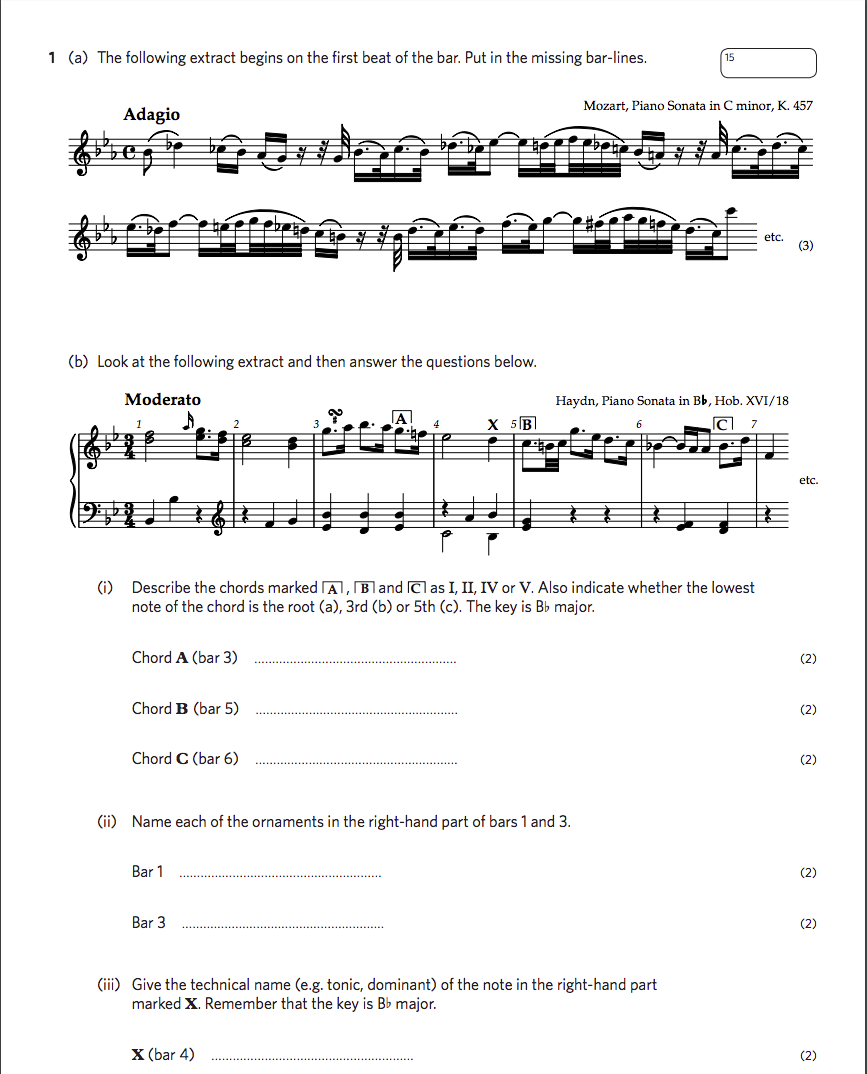
The first question contains a mixture of musical analysis with general knowledge. Analysing a piece of music for chords is something that I often do and I have come to know all of the technical names for chords and notes. However , describing the ornaments in the piece was something that I needed to research as there are some pretty obscure ones in there.
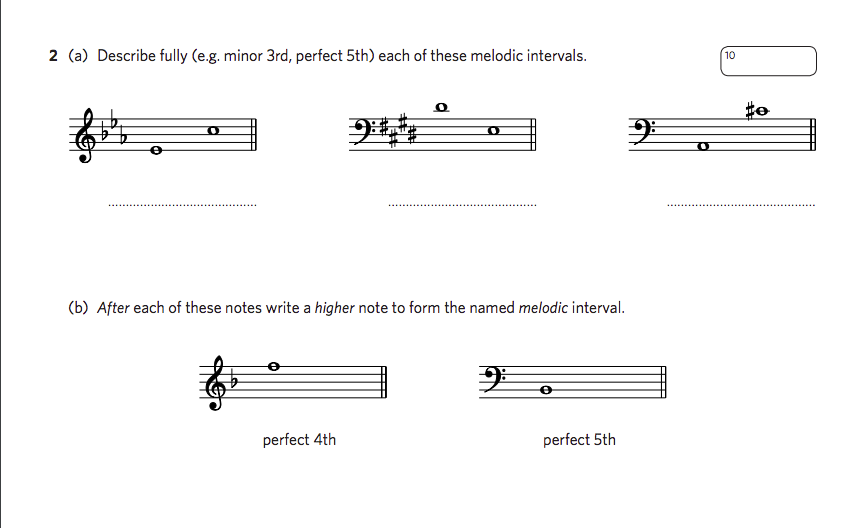
Working out melodic intervals again is something that I often work on and therefore to prepare for questions like this, all that I needed to do was to brush up on my interval knowledge.
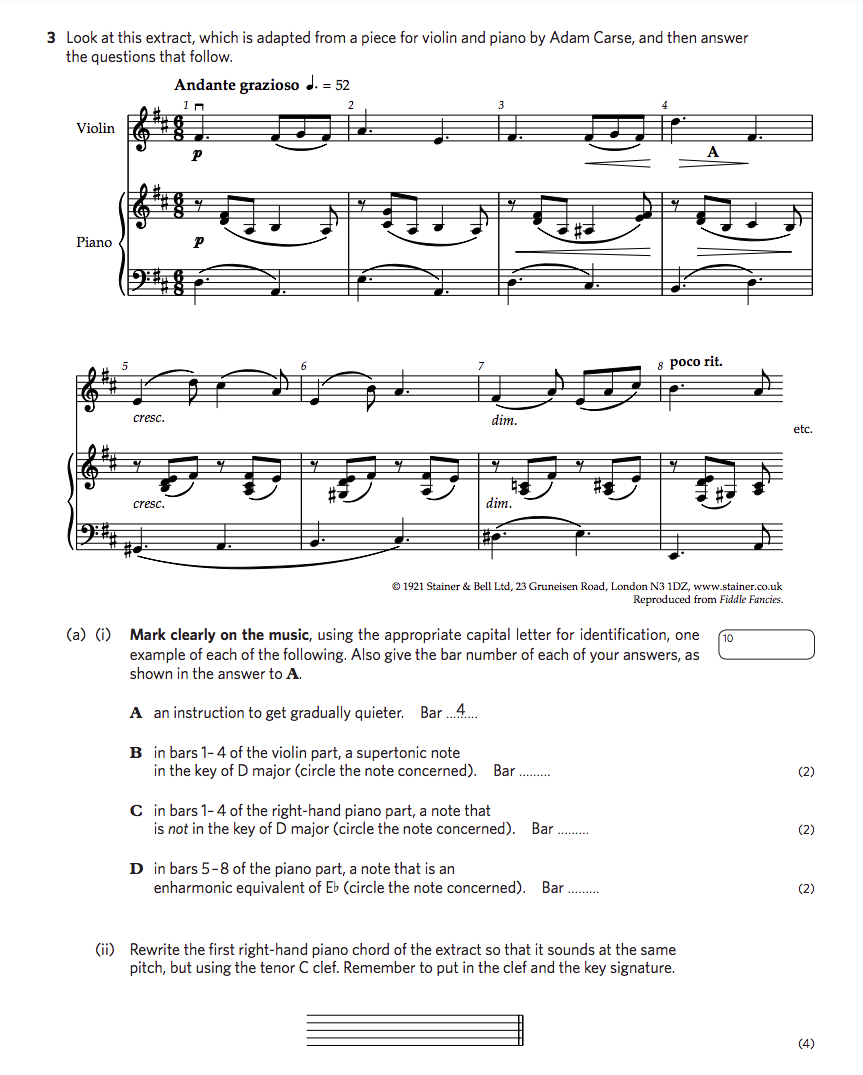
Question three again is mainly a music analysis question. The tenor clef question is one that I found really hard to do as prior to preparing for my grade five theory, I hadn’t really come across tenor or alto clef and I needed to develop my understanding of them as well as the ability to transpose and write in that clef. The hard thing about tenor and alto clef is that middle C is completely different than treble so it requires a lot of concentration and interval knowledge.
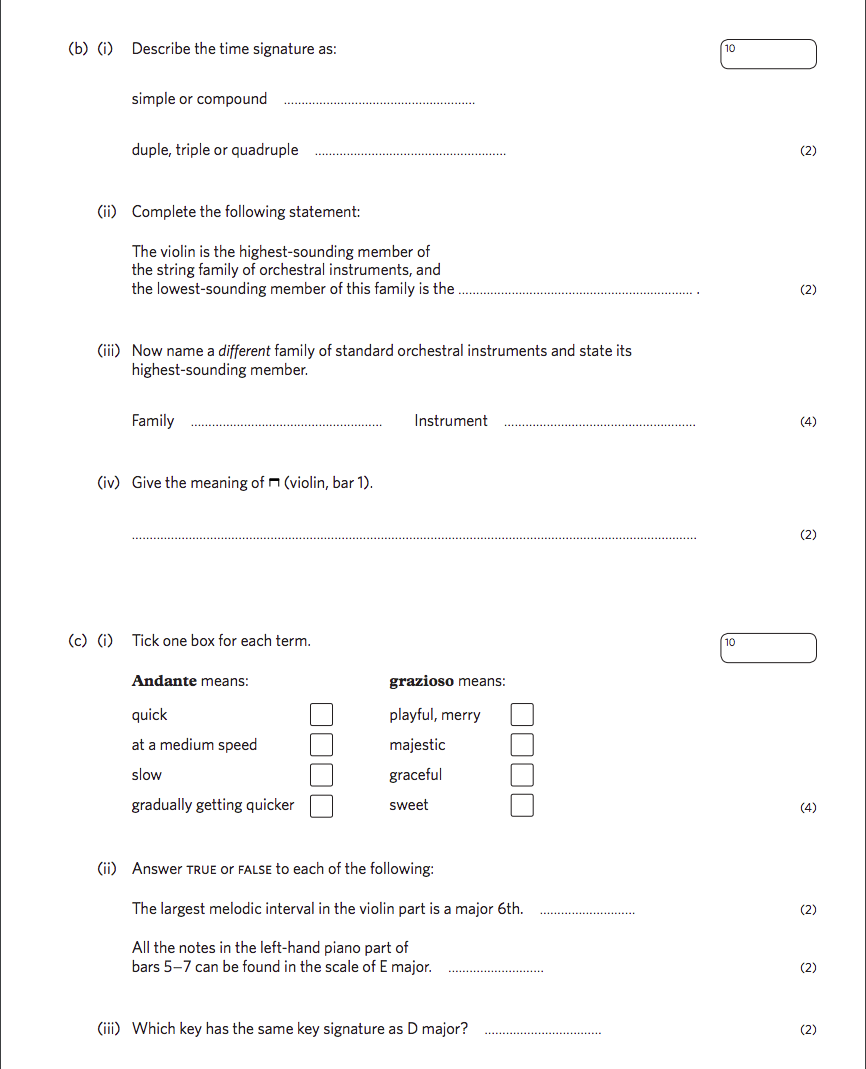
Question three also required a knowledge of time signatures as well as general orchestral music family knowledge. Although I am far from being an expert, the question in this paper was relatively straightforward. Luckily, many of the Italian music words are very similar to the English and therefore I could take a good guess at some like grazioso.
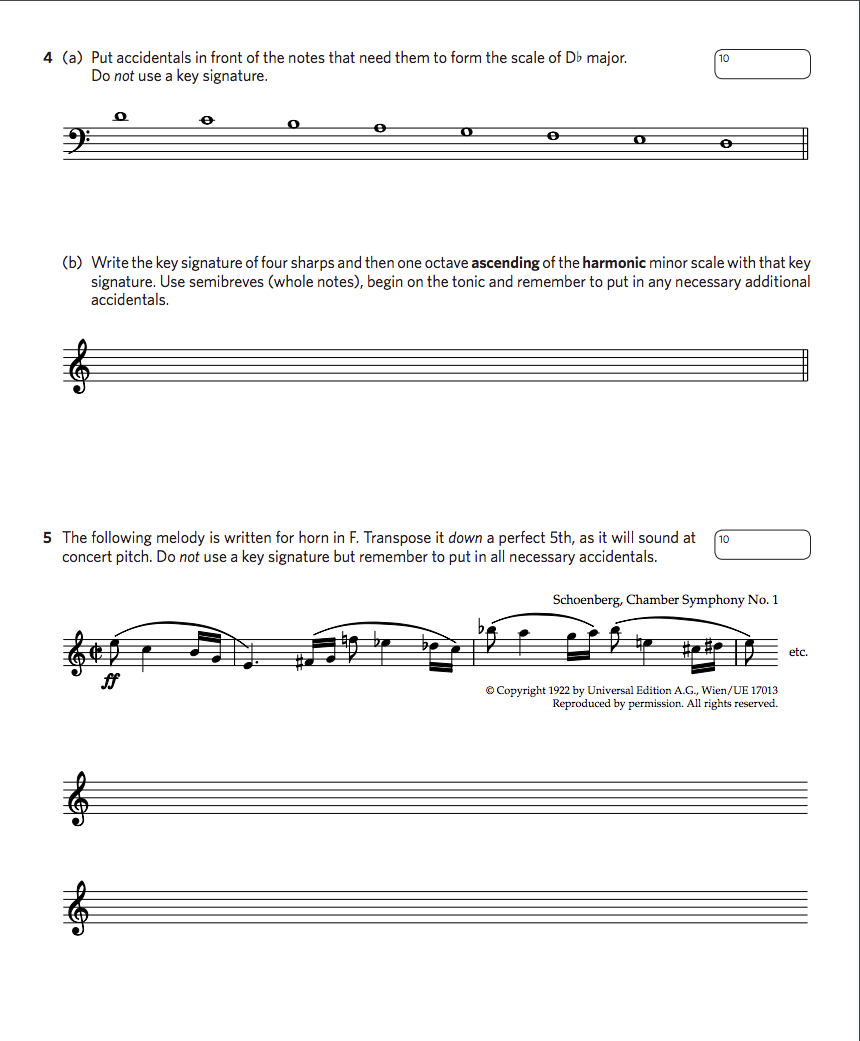
Question four was relatively straightforward, as through my piano practice I play all my major and minor scales in every key and therefore knew the structure for this scale.
Question five was one of the kinder transposition questions that I have come across as transposing down a perfect 5th isn’t something that I find particularly hard. The harder part for me is being able to write a long passage of music like that accurately and it is something that I put a lot of practice into in this exam.
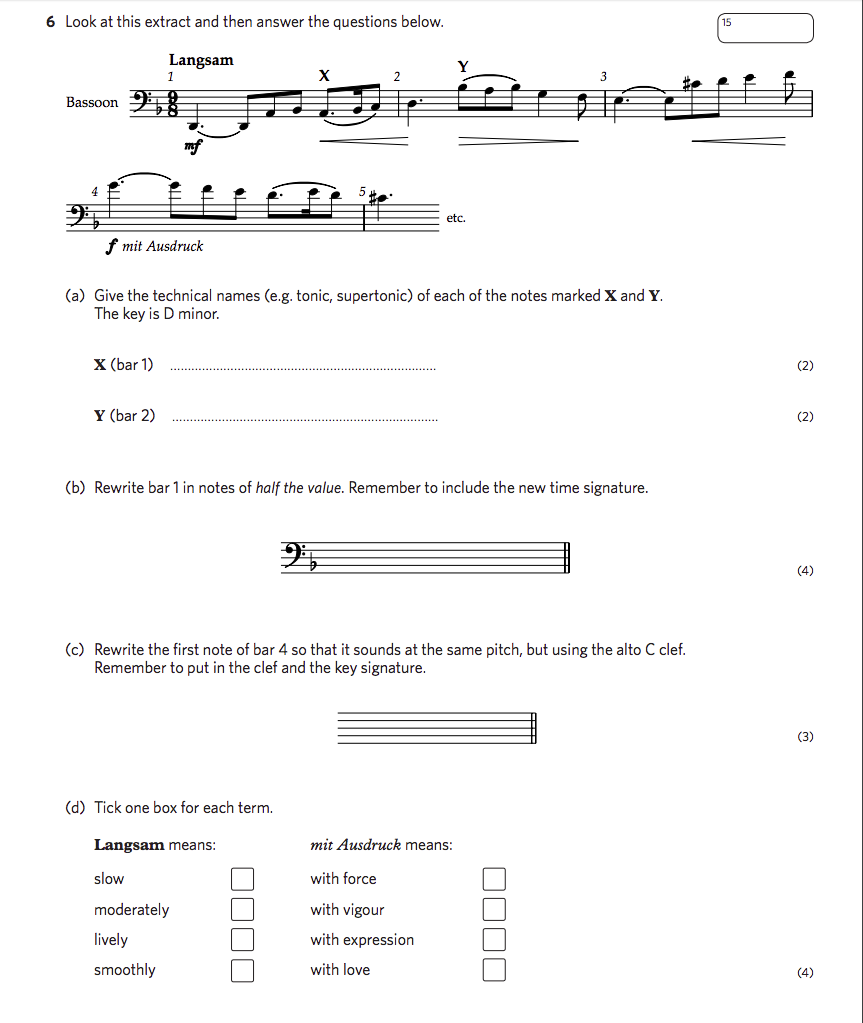
Question seven contains a lot of material that has already been covered in the exam.
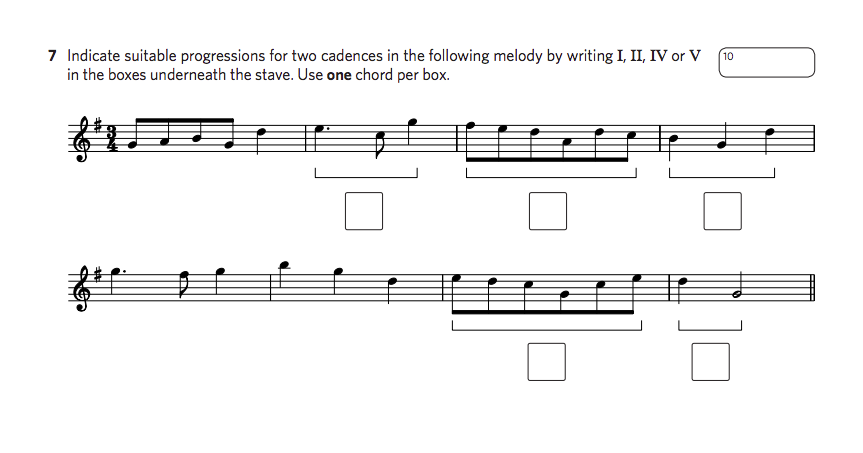
Finally, question seven tested my knowledge on cadences. Luckily we covered cadences in GCSE music and I often use cadences like 2-5-1 in my playing without realising. For this question all that you needed to do was try and work out what chords could be made up of the given notes and then work out the cadences from that.
When preparing for my Grade five theory exam, I mainly focused on using practice papers and the ABRSM grade five work book that I borrowed from the college library. Anything that I was unsure of I either researched online or asked John or Nic about. One of the hardest parts that I found was learning the Italian words that would be found on a score and unfortunately I didn’t practice these enough as I felt that my base knowledge of music would probably cover this. I felt that with the time scale I had, that I should work on some of the bigger topics such as learning cadences and practicing creating a melody.
ABRSM Grade Five Theory Exam – Wednesday 6th March
On the 6th May, I sat my Grade 5 music theory exam with ABRSM, overall I felt that the test went quite well. There were a few questions that came up that I hadn’t learnt about , however most people seemed to have had a similar reaction. I am hoping that i have passed and maybe I might get a merit or distinction.
Grade Five Theory Result Reaction
